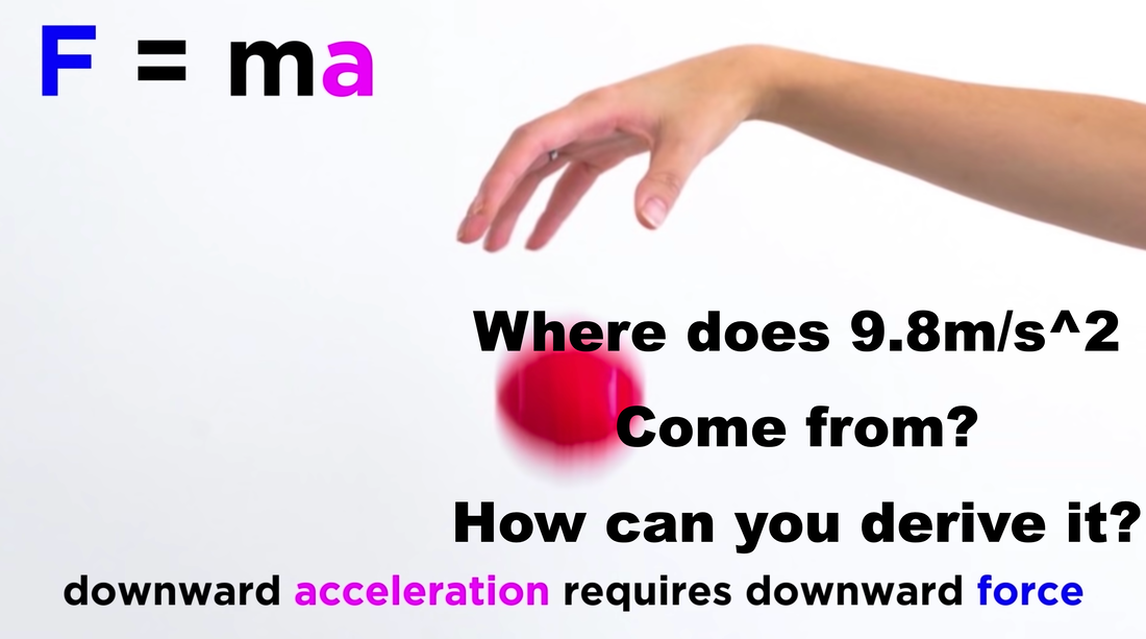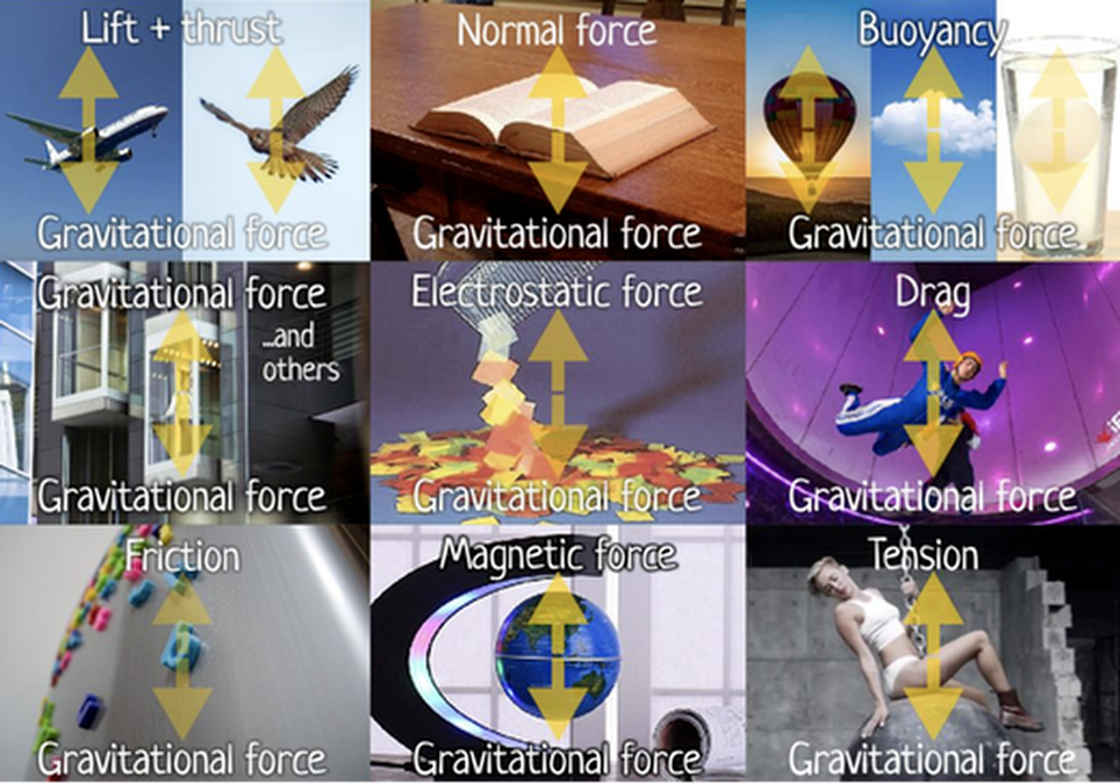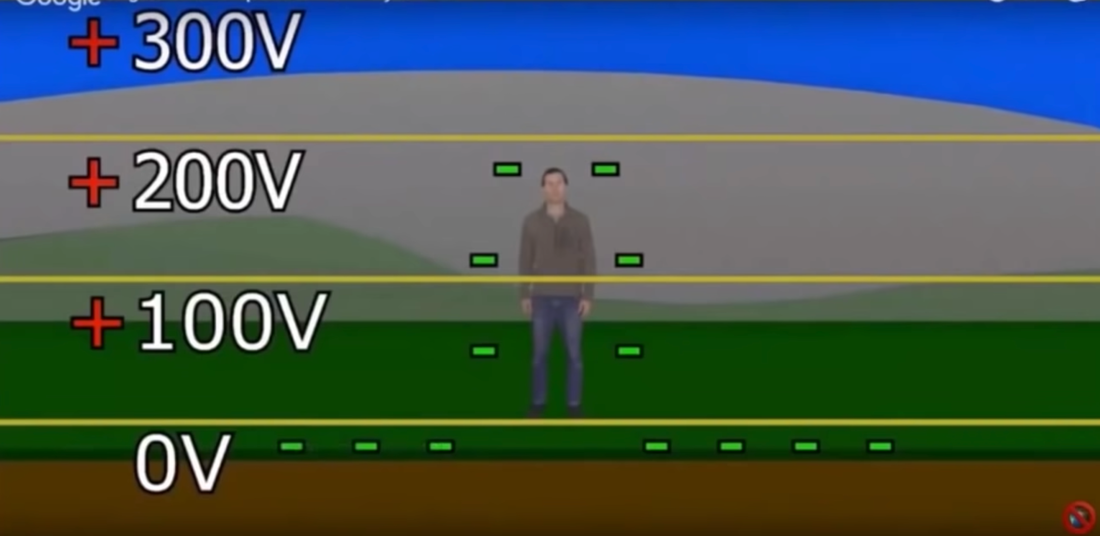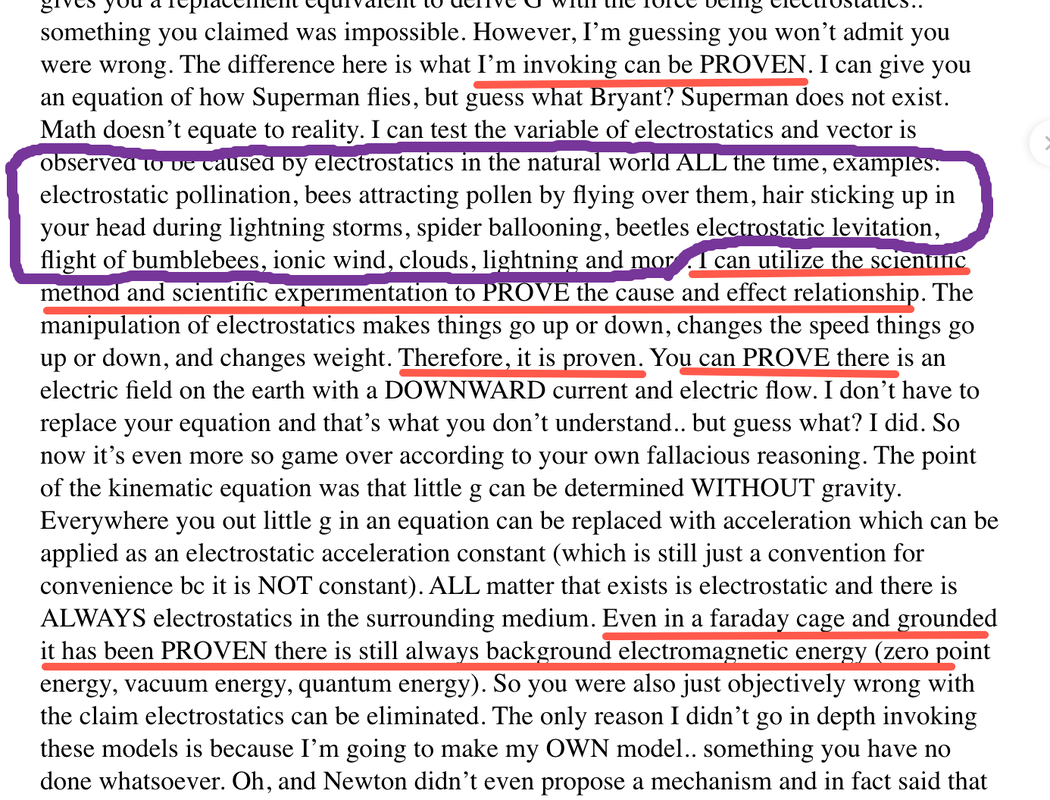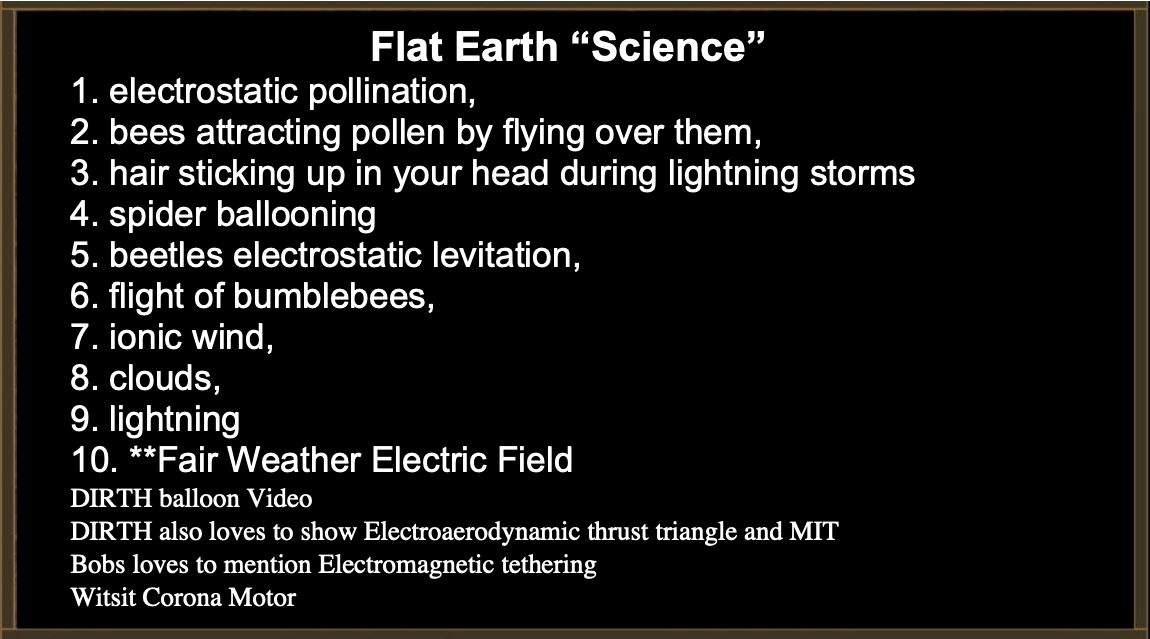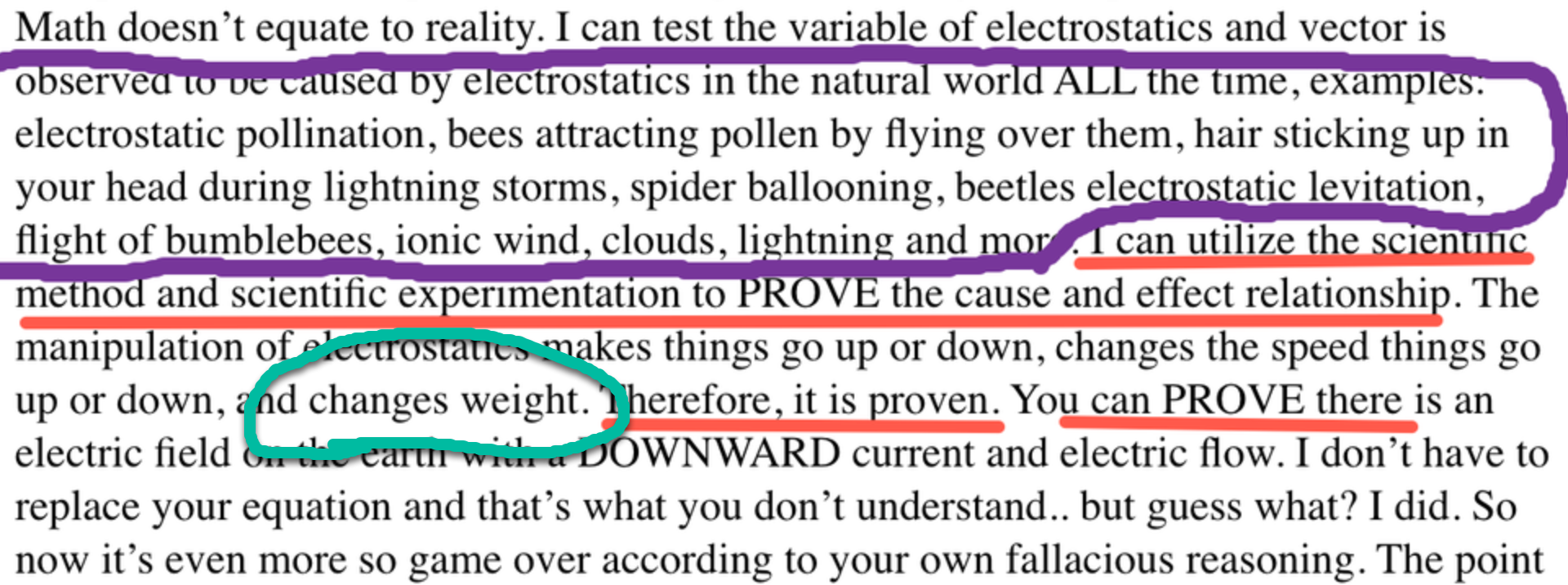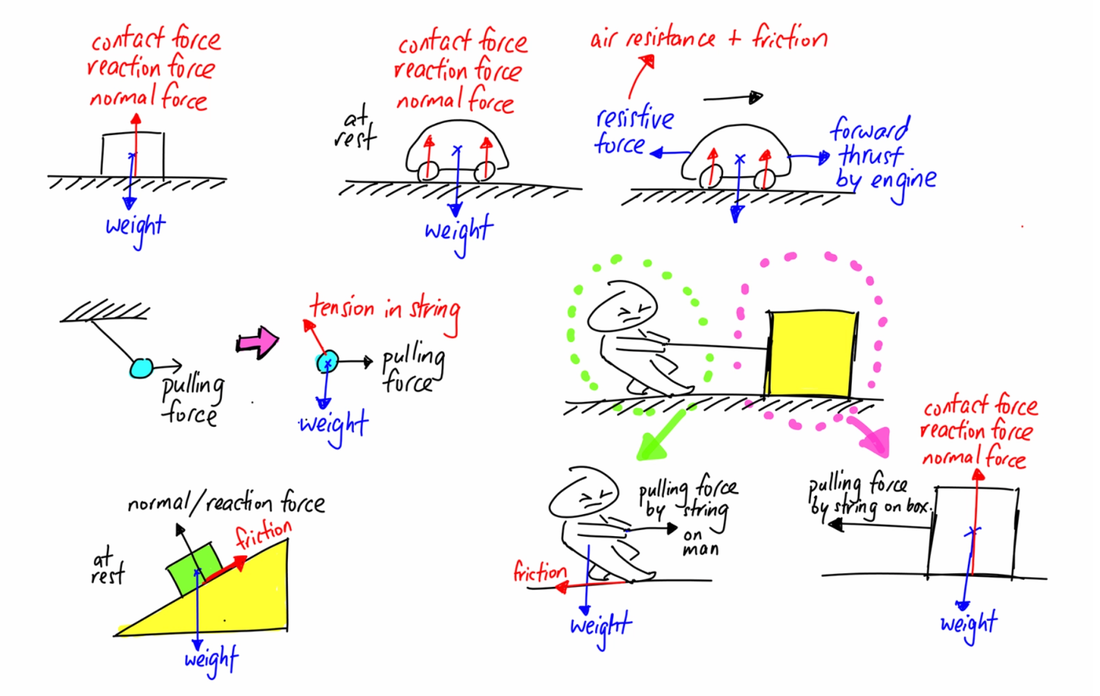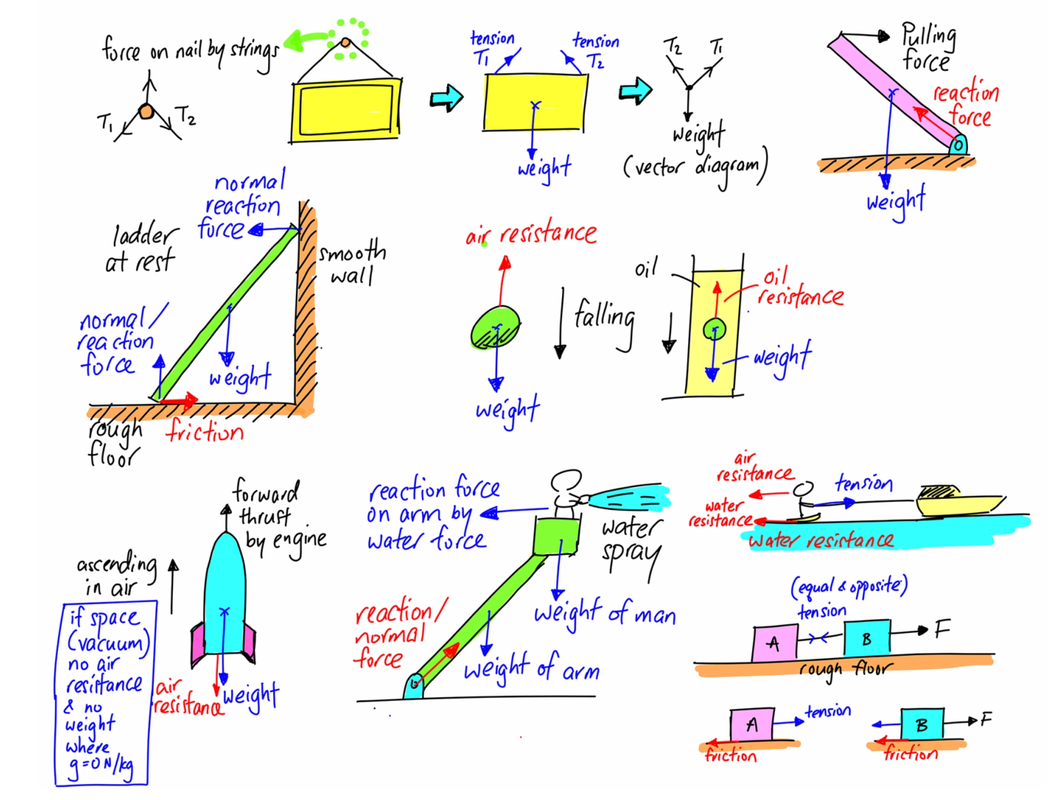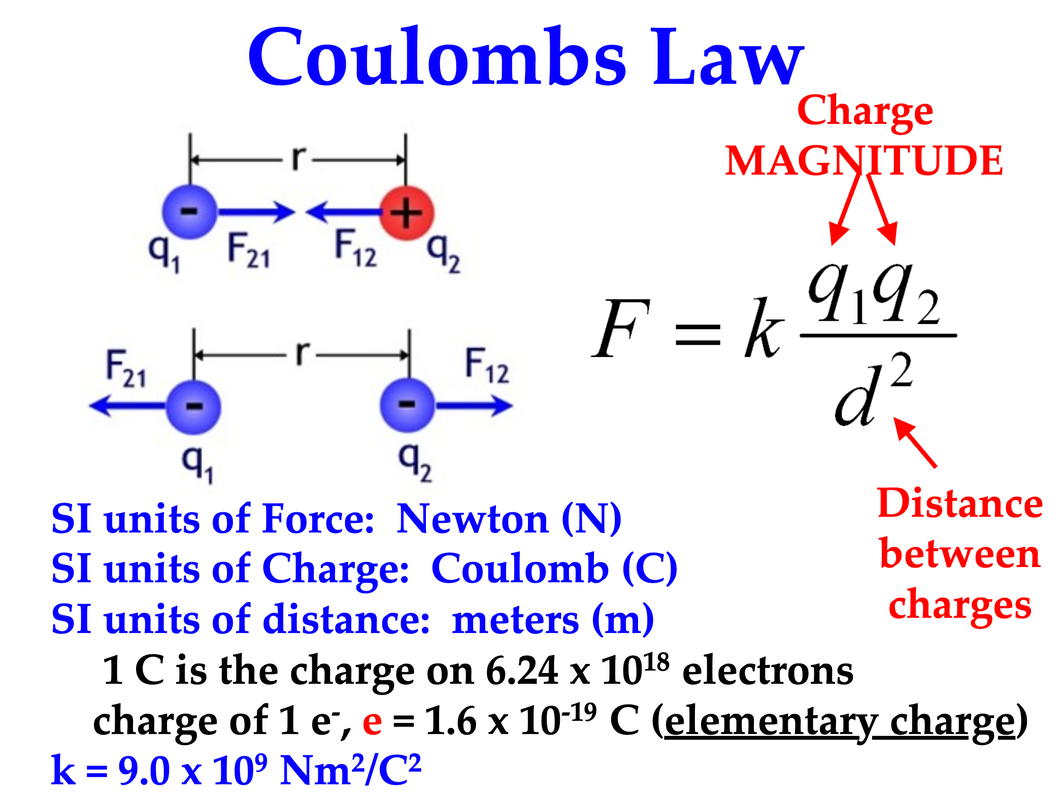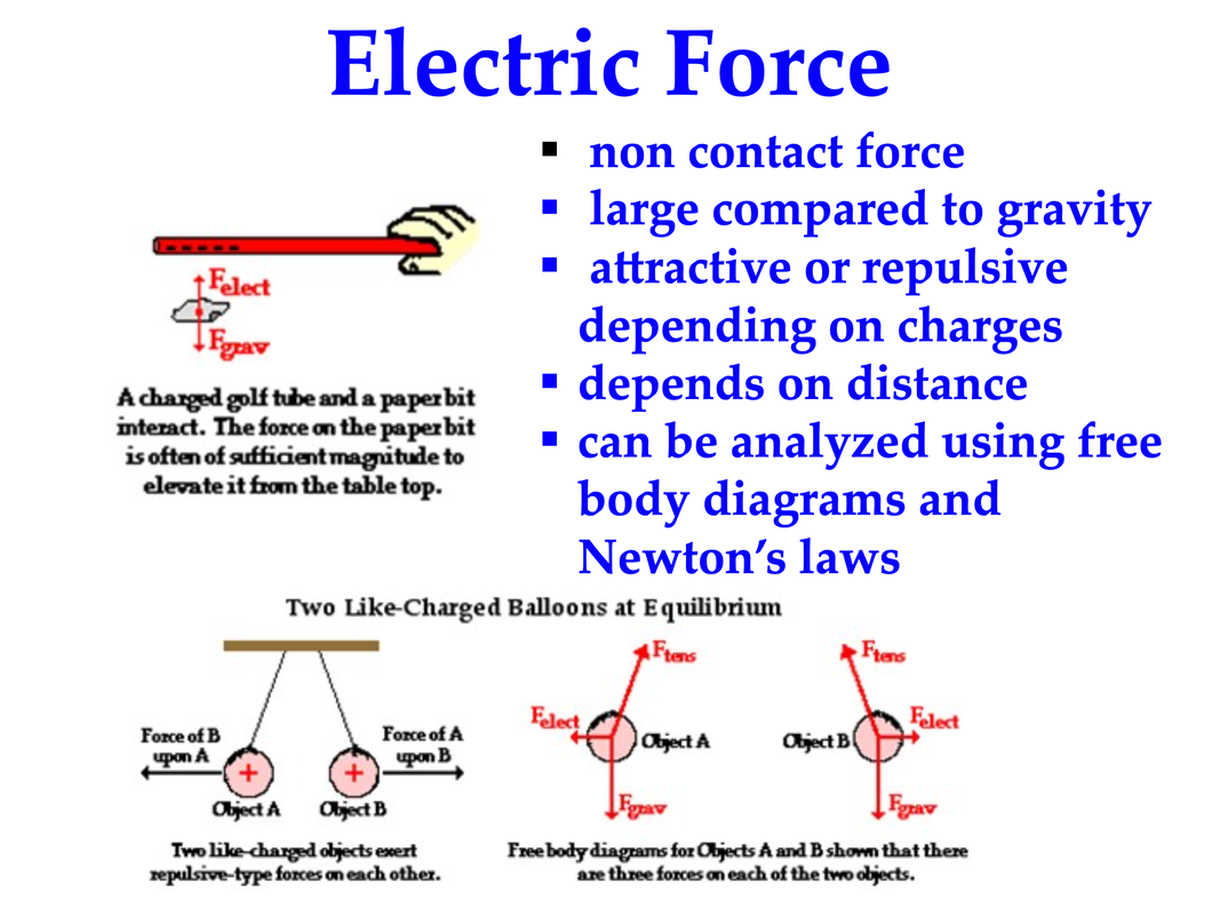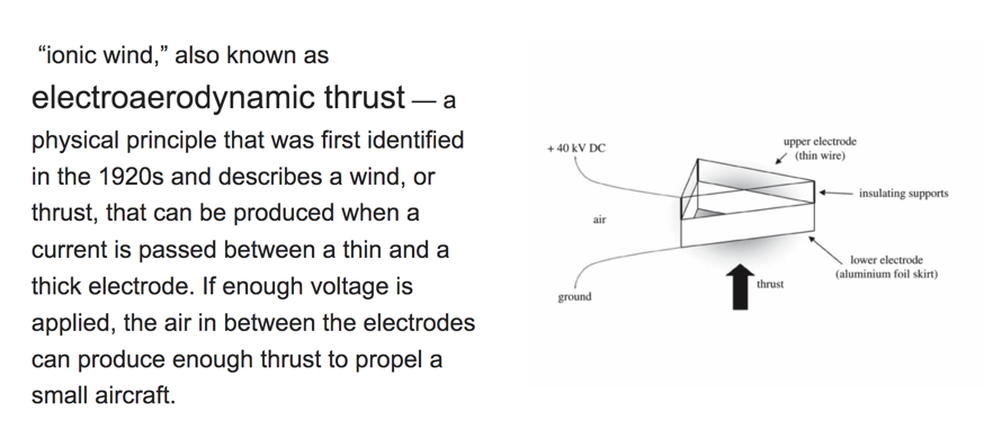Using YOUR MODEL, how do you output the Magnitude AND direction of the MEASURED downward acceleration of 9.8 m/s^2?
"When we talk about what is on the earth, we want to use Science, we want to actually prove things".
-Witsit
-Witsit
"We can make things float"
~Flat earth sCiENtISts
~Flat earth sCiENtISts
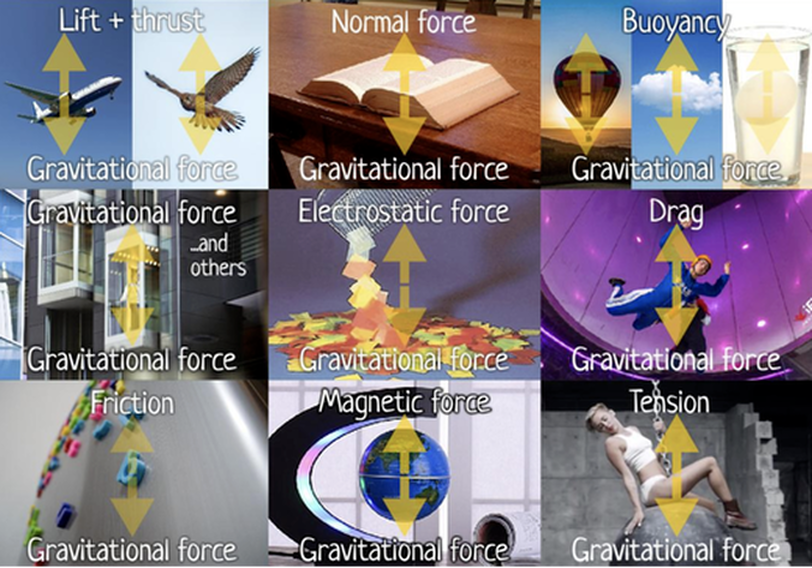
Gravity is not the only force. Electrostatics is not the only force.
Gravity is not the only force. There are many other forces. An object can be influenced by more than a force, and gravity is only one of them. An object is accelerated according to the sum of the forces affecting it.
Flat-Earthers take the fact there are objects that move against the direction of gravity as ‘evidence’ of the non-existence of gravity. They are wrong. There are forces other than gravity affecting the object, having the opposite direction from gravity, with at least the same magnitude.
Airplanes and birds fly because of lift and thrust that is greater than the force of gravity. An object can be stationary atop another object because of the normal force. Hot air balloons, clouds, and eggs in salt water can float if their buoyancy exceeds the force of gravity affecting them. Pieces of paper can go upward and stick to a comb because the electrostatic force attracting them is greater than gravity. An indoor skydiver can float because of drag from the wind is the same as the force of gravity. Fridge magnets can stick to the surface of a fridge because of their friction is holding them against gravity. A floating globe floats because of magnetic force repel it up against gravity. A wrecking ball does not fall down because of the tension from its chain holding it against the force of gravity.
The force of gravity can even counteract each other in the form of counterweight. An elevator (lift) that takes us up and down in a skyscraper has a counterweight having about the same mass as the elevator itself. This way, the motor does not need to hold the entire weight of the elevator and spends much less energy.
All the phenomenon where an object is in motion against the direction of gravity can be explained by mechanics and physics in a consistent manner.
Gravity is not the only force. There are many other forces. An object can be influenced by more than a force, and gravity is only one of them. An object is accelerated according to the sum of the forces affecting it.
Flat-Earthers take the fact there are objects that move against the direction of gravity as ‘evidence’ of the non-existence of gravity. They are wrong. There are forces other than gravity affecting the object, having the opposite direction from gravity, with at least the same magnitude.
Airplanes and birds fly because of lift and thrust that is greater than the force of gravity. An object can be stationary atop another object because of the normal force. Hot air balloons, clouds, and eggs in salt water can float if their buoyancy exceeds the force of gravity affecting them. Pieces of paper can go upward and stick to a comb because the electrostatic force attracting them is greater than gravity. An indoor skydiver can float because of drag from the wind is the same as the force of gravity. Fridge magnets can stick to the surface of a fridge because of their friction is holding them against gravity. A floating globe floats because of magnetic force repel it up against gravity. A wrecking ball does not fall down because of the tension from its chain holding it against the force of gravity.
The force of gravity can even counteract each other in the form of counterweight. An elevator (lift) that takes us up and down in a skyscraper has a counterweight having about the same mass as the elevator itself. This way, the motor does not need to hold the entire weight of the elevator and spends much less energy.
All the phenomenon where an object is in motion against the direction of gravity can be explained by mechanics and physics in a consistent manner.
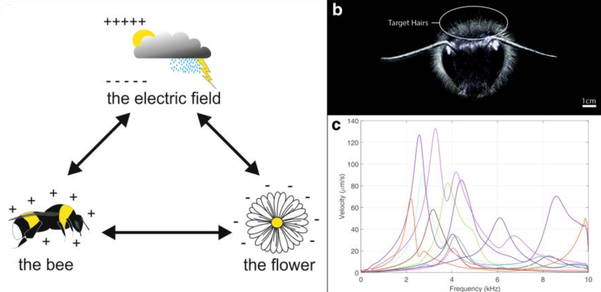
1. Electrostatic Pollination and Bees attracting Pollen by Flying over them.
Electrostatic + Gravity
Co-evolutionary adaptation... Flowers use bees as vehicles to enhance pollen transport and fertilization, while bees greatly benefit from pollen and nectar as food sources
Focussing on pollen transfer, the three ingredients that enable electrostatic interactions are
1) atmospheric electric field
2) the capacity of bees to accumulate positive charge
3) and the propensity of plants to be relatively negatively charged.
Electrostatic + Gravity
Co-evolutionary adaptation... Flowers use bees as vehicles to enhance pollen transport and fertilization, while bees greatly benefit from pollen and nectar as food sources
Focussing on pollen transfer, the three ingredients that enable electrostatic interactions are
1) atmospheric electric field
2) the capacity of bees to accumulate positive charge
3) and the propensity of plants to be relatively negatively charged.
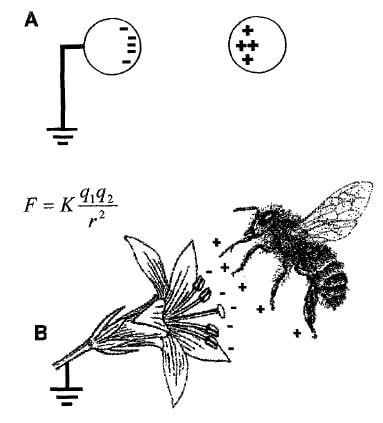
Electromechanical reception in bumblebees and electrical ecology of pollination. a Interactions between bee, flower, and atmospheric electric field cannot be separated, as each of them influence the other. b Frontal confocal photograph of a bumble bee illustrating target hairs used to establish the site of electromechanical detection of electric fields in bumble bees (modified from Sutton et al. 2016). c Mechanical response of diverse bumble bee hairs to an electric field stimulus.
Draw a free body diagram
Pollen electrostatic
Gravity
Draw a free body diagram
Pollen electrostatic
Gravity
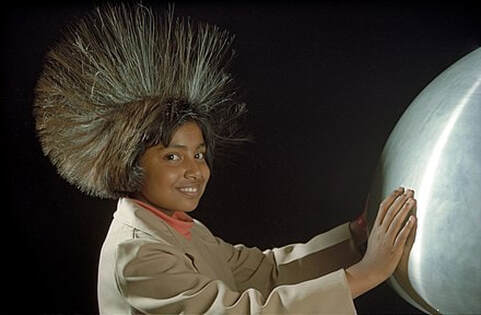
3. Hairing Sticking up
Electrostatic + Gravity
Each individual hair has the same net charge as the rest of the fur and the dome. Since like charges repel, the hairs are pushed away from each other and the similarly-charged dome, causing them to stand up. Under the right conditions, the fur may even fly off the dome if the electric force exceeds gravity.
When turned on, the dome of the Van de Graaff generator becomes charged (either positive or negative depending on its design). Anything in contact with the dome also gains the same charge. If a person holds the dome, they will become charged and their hair might stand on end if it is long and dry enough. If a bit of fur or similar material is set on the dome, the hairs will stand on end. Each individual hair has the same net charge as the rest of the fur and the dome. Since like charges repel, the hairs are pushed away from each other and the similarly-charged dome, causing them to stand up.
Under the right conditions, the fur may even fly off the dome if the electric force exceeds gravity.
Electrostatic + Gravity
Each individual hair has the same net charge as the rest of the fur and the dome. Since like charges repel, the hairs are pushed away from each other and the similarly-charged dome, causing them to stand up. Under the right conditions, the fur may even fly off the dome if the electric force exceeds gravity.
When turned on, the dome of the Van de Graaff generator becomes charged (either positive or negative depending on its design). Anything in contact with the dome also gains the same charge. If a person holds the dome, they will become charged and their hair might stand on end if it is long and dry enough. If a bit of fur or similar material is set on the dome, the hairs will stand on end. Each individual hair has the same net charge as the rest of the fur and the dome. Since like charges repel, the hairs are pushed away from each other and the similarly-charged dome, causing them to stand up.
Under the right conditions, the fur may even fly off the dome if the electric force exceeds gravity.
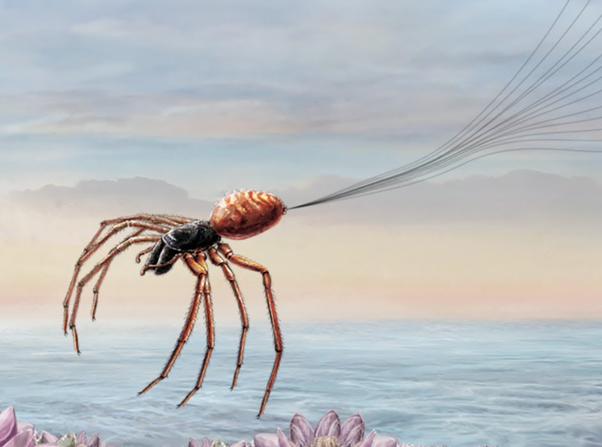
Spider Ballooning
Electrostatic + Lift + Drag + Gravity
200 km/h (about 120 mph).
6.4 km/h (about 4 mph)
Ballooning, sometimes called kiting, is a process by which spiders, and some other small invertebrates, move through the air by releasing one or more gossamer threads to catch the wind, causing them to become airborne at the mercy of air currents and electric fields. A 2018 study concluded that electric fields provide enough force to lift spiders in the air, and possibly elicit ballooning behavior. This is primarily used by spiderlings to disperse; however, larger individuals have been observed doing so as well. The spider climbs to a high point and takes a stance with its abdomen to the sky, releasing fine silk threads from its spinneret until it becomes aloft. Journeys achieved vary from a few metres to hundreds of kilometres
It is generally thought that most spiders heavier than 1 mg are unlikely to use ballooning!
Electrostatic + Lift + Drag + Gravity
200 km/h (about 120 mph).
6.4 km/h (about 4 mph)
Ballooning, sometimes called kiting, is a process by which spiders, and some other small invertebrates, move through the air by releasing one or more gossamer threads to catch the wind, causing them to become airborne at the mercy of air currents and electric fields. A 2018 study concluded that electric fields provide enough force to lift spiders in the air, and possibly elicit ballooning behavior. This is primarily used by spiderlings to disperse; however, larger individuals have been observed doing so as well. The spider climbs to a high point and takes a stance with its abdomen to the sky, releasing fine silk threads from its spinneret until it becomes aloft. Journeys achieved vary from a few metres to hundreds of kilometres
It is generally thought that most spiders heavier than 1 mg are unlikely to use ballooning!
Why Clouds Float
Gravity + Bouyancy + Drag
Clouds are composed primarily of small water droplets and, if it's cold enough, ice crystals. The vast majority of clouds you see contain droplets and/or crystals that are too small to have any appreciable fall velocity. So the particles continue to float with the surrounding air. For an analogy closer to the ground, think of tiny dust particles that, when viewed against a shaft of sunlight, appear to float in the air.
Indeed, the distance from the center of a typical water droplet to its edge--its radius--ranges from a few microns (thousandths of a millimeter) to a few tens of microns (ice crystals are often a bit larger). And the speed with which any object falls is related to its mass and surface area--which is why a feather falls more slowly than a pebble of the same weight. For particles that are roughly spherical, mass is proportional to the radius cubed (r3); the downward-facing surface area of such a particle is proportional to the radius squared (r2). Thus, as a tiny water droplet grows, its mass becomes more important than its shape and the droplet falls faster. Even a large droplet having a radius of 100 microns has a fall velocity of only about 27 centimeters per second (cm/s). And because ice crystals have more irregular shapes, their fall velocities are relatively smaller.
Upward vertical motions, or updrafts, in the atmosphere also contribute to the floating appearance of clouds by offsetting the small fall velocities of their constituent particles. Clouds generally form, survive and grow in air that is moving upward. Rising air expands as the pressure on it decreases, and that expansion into thinner, high-altitude air causes cooling. Enough cooling eventually makes water vapor condense, which contributes to the survival and growth of the clouds. Stratiform clouds (those producing steady rain) typically form in an environment with widespread but weak upward motion (say, a few cm/s); convective clouds (those causing showers and thunderstorms) are associated with updrafts that exceed a few meters per second. In both cases, though, the atmospheric ascent is sufficient to negate the small fall velocities of cloud particles.
Another way to illustrate the relative lightness of clouds is to compare the total mass of a cloud to the mass of the air in which it resides. Consider a hypothetical but typical small cloud at an altitude of 10,000 feet, comprising one cubic kilometer and having a liquid water content of 1.0 gram per cubic meter. The total mass of the cloud particles is about 1 million kilograms, which is roughly equivalent to the weight of 500 automobiles. But the total mass of the air in that same cubic kilometer is about 1 billion kilograms--1,000 times heavier than the liquid!
So, even though typical clouds do contain a lot of water, this water is spread out for miles in the form of tiny water droplets or crystals, which are so small that the effect of gravity on them is negligible. Thus, from our vantage on the ground, clouds seem to float in the sky.
Gravity + Bouyancy + Drag
Clouds are composed primarily of small water droplets and, if it's cold enough, ice crystals. The vast majority of clouds you see contain droplets and/or crystals that are too small to have any appreciable fall velocity. So the particles continue to float with the surrounding air. For an analogy closer to the ground, think of tiny dust particles that, when viewed against a shaft of sunlight, appear to float in the air.
Indeed, the distance from the center of a typical water droplet to its edge--its radius--ranges from a few microns (thousandths of a millimeter) to a few tens of microns (ice crystals are often a bit larger). And the speed with which any object falls is related to its mass and surface area--which is why a feather falls more slowly than a pebble of the same weight. For particles that are roughly spherical, mass is proportional to the radius cubed (r3); the downward-facing surface area of such a particle is proportional to the radius squared (r2). Thus, as a tiny water droplet grows, its mass becomes more important than its shape and the droplet falls faster. Even a large droplet having a radius of 100 microns has a fall velocity of only about 27 centimeters per second (cm/s). And because ice crystals have more irregular shapes, their fall velocities are relatively smaller.
Upward vertical motions, or updrafts, in the atmosphere also contribute to the floating appearance of clouds by offsetting the small fall velocities of their constituent particles. Clouds generally form, survive and grow in air that is moving upward. Rising air expands as the pressure on it decreases, and that expansion into thinner, high-altitude air causes cooling. Enough cooling eventually makes water vapor condense, which contributes to the survival and growth of the clouds. Stratiform clouds (those producing steady rain) typically form in an environment with widespread but weak upward motion (say, a few cm/s); convective clouds (those causing showers and thunderstorms) are associated with updrafts that exceed a few meters per second. In both cases, though, the atmospheric ascent is sufficient to negate the small fall velocities of cloud particles.
Another way to illustrate the relative lightness of clouds is to compare the total mass of a cloud to the mass of the air in which it resides. Consider a hypothetical but typical small cloud at an altitude of 10,000 feet, comprising one cubic kilometer and having a liquid water content of 1.0 gram per cubic meter. The total mass of the cloud particles is about 1 million kilograms, which is roughly equivalent to the weight of 500 automobiles. But the total mass of the air in that same cubic kilometer is about 1 billion kilograms--1,000 times heavier than the liquid!
So, even though typical clouds do contain a lot of water, this water is spread out for miles in the form of tiny water droplets or crystals, which are so small that the effect of gravity on them is negligible. Thus, from our vantage on the ground, clouds seem to float in the sky.
How do Bees Fly - Hint, it’s not electrostatics Source:
Source: https://www.livescience.com/33075-how-bees-fly.html
Gravity + Lift
Short and stubby, the bumblebee doesn't look very flight-worthy. Indeed, in the 1930s, French entomologist August Magnan even noted that the insect's flight is actually impossible, a notion that has stuck in popular consciousness since then.
Dickinson published a 2005 study in the journal Proceedings of the National Academy of Sciences on the flight of the bumblebee after gathering data using high-speed photography of actual flying bees and force sensors on a larger-than-life robotic bee wing flapping around in mineral oil. He says the big misconception about insect flight and perhaps what tripped up Magnan is the belief that bumblebees flap their wings up and down. "Actually, with rare exceptions, they flap their wings back and forth," Magnan said.
Take your arm and put it out to your side, parallel to the ground with your palm facing down. Now sweep your arm forward. When you reach in front of you, pull your thumb up, so that you flip your arm over and your palm is upwards. Now, with your palm up, sweep your arm back. When you reach behind you, flip your hand over again, palm down for the forward stroke. Repeat. If you gave your hand a slight tilt (so that it's not completely parallel to the ground), Dickinson said, you'd be doing something similar to a bug flap.
The fluid dynamics behind bumblebees' flight are different from those that allow a plane to fly. An airplane's wing forces air down, which in turn pushes the wing (and the plane it's attached to) upward. For bugs, it isn't so simple. The wing sweeping is a bit like a partial spin of a "somewhat crappy" helicopter propeller, Dickinson said, but the angle to the wing also creates vortices in the airlike small hurricanes. The eyes of those mini-hurricanes have lower pressure than the surrounding air, so, keeping those eddies of air above its wings helps the bee stay aloft.
Source: https://www.livescience.com/33075-how-bees-fly.html
Gravity + Lift
Short and stubby, the bumblebee doesn't look very flight-worthy. Indeed, in the 1930s, French entomologist August Magnan even noted that the insect's flight is actually impossible, a notion that has stuck in popular consciousness since then.
Dickinson published a 2005 study in the journal Proceedings of the National Academy of Sciences on the flight of the bumblebee after gathering data using high-speed photography of actual flying bees and force sensors on a larger-than-life robotic bee wing flapping around in mineral oil. He says the big misconception about insect flight and perhaps what tripped up Magnan is the belief that bumblebees flap their wings up and down. "Actually, with rare exceptions, they flap their wings back and forth," Magnan said.
Take your arm and put it out to your side, parallel to the ground with your palm facing down. Now sweep your arm forward. When you reach in front of you, pull your thumb up, so that you flip your arm over and your palm is upwards. Now, with your palm up, sweep your arm back. When you reach behind you, flip your hand over again, palm down for the forward stroke. Repeat. If you gave your hand a slight tilt (so that it's not completely parallel to the ground), Dickinson said, you'd be doing something similar to a bug flap.
The fluid dynamics behind bumblebees' flight are different from those that allow a plane to fly. An airplane's wing forces air down, which in turn pushes the wing (and the plane it's attached to) upward. For bugs, it isn't so simple. The wing sweeping is a bit like a partial spin of a "somewhat crappy" helicopter propeller, Dickinson said, but the angle to the wing also creates vortices in the airlike small hurricanes. The eyes of those mini-hurricanes have lower pressure than the surrounding air, so, keeping those eddies of air above its wings helps the bee stay aloft.
Ionic Wind
Also called electroaerodynamic thrust
Electrostatics + Lift + Gravity
An eccentric inventor in the 1920's experimented with high energy
Electrotrodes and thought he discovered antigravity which was OF COURSE
Not the case.
But it set the ground work for creating ionic wind in the atmosphere.
Also called electroaerodynamic thrust
Electrostatics + Lift + Gravity
An eccentric inventor in the 1920's experimented with high energy
Electrotrodes and thought he discovered antigravity which was OF COURSE
Not the case.
But it set the ground work for creating ionic wind in the atmosphere.
MIT
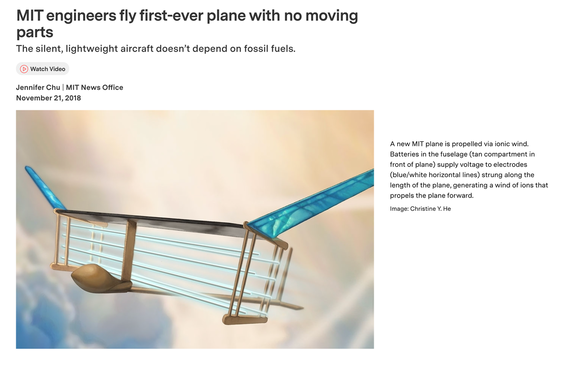
About nine years ago, Barrett started looking for ways to design a propulsion system for planes with no moving parts. He eventually came upon “ionic wind,” also known as electroaerodynamic thrust — a physical principle that was first identified in the 1920s and describes a wind, or thrust, that can be produced when a current is passed between a thin and a thick electrode. If enough voltage is applied, the air in between the electrodes can produce enough thrust to propel a small aircraft.
For years, electroaerodynamic thrust has mostly been a hobbyist’s project, and designs have for the most part been limited to small, desktop “lifters” tethered to large voltage supplies that create just enough wind for a small craft to hover briefly in the air. It was largely assumed that it would be impossible to produce enough ionic wind to propel a larger aircraft over a sustained flight.
For years, electroaerodynamic thrust has mostly been a hobbyist’s project, and designs have for the most part been limited to small, desktop “lifters” tethered to large voltage supplies that create just enough wind for a small craft to hover briefly in the air. It was largely assumed that it would be impossible to produce enough ionic wind to propel a larger aircraft over a sustained flight.
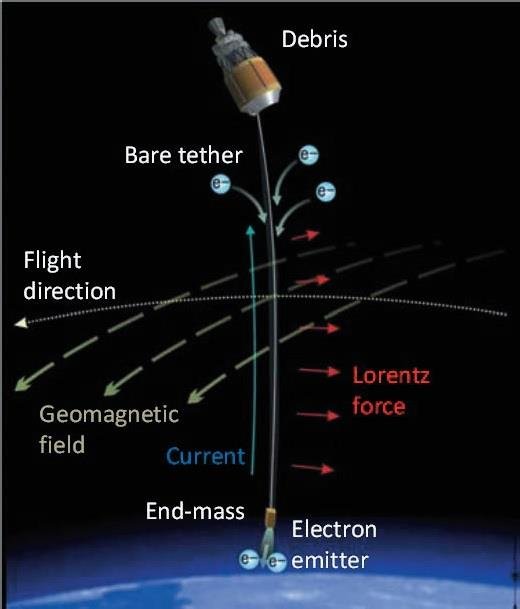
Gravity + Magnetic Force
Electrodynamic tethers (EDTs) are long conducting wires, such as one deployed from a tether satellite, which can operate on electromagnetic principles as generators, by converting their kinetic energy to electrical energy, or as motors, converting electrical energy to kinetic energy.[1] Electric potential is generated across a conductive tether by its motion through a planet's magnetic field.
As part of a tether propulsion system, craft can use long, strong conductors (though not all tethers are conductive) to change the orbits of spacecraft. It has the potential to make space travel significantly cheaper.[citation needed] When direct current is applied to the tether, it exerts a Lorentz force against the magnetic field, and the tether exerts a force on the vehicle. It can be used either to accelerate or brake an orbiting spacecraft.
Electrodynamic tethers (EDTs) are long conducting wires, such as one deployed from a tether satellite, which can operate on electromagnetic principles as generators, by converting their kinetic energy to electrical energy, or as motors, converting electrical energy to kinetic energy.[1] Electric potential is generated across a conductive tether by its motion through a planet's magnetic field.
As part of a tether propulsion system, craft can use long, strong conductors (though not all tethers are conductive) to change the orbits of spacecraft. It has the potential to make space travel significantly cheaper.[citation needed] When direct current is applied to the tether, it exerts a Lorentz force against the magnetic field, and the tether exerts a force on the vehicle. It can be used either to accelerate or brake an orbiting spacecraft.
Electrostatic gravitation DOESN'T WORK!!
Earth has an electrostatic charge. All objects have an electrostatic charge
Vague, so do all objects have positive charge? What creates the bias.
We can measure objects with charge. We don't observe all non earth objects repelled?
The earth and all objects have a charge? No they don't objects can be electrically neutral.
Objects are attracted to the earth because of a charge? They can be but must do a free body diagram.
Charges
1) A charge is a property of matter that objects can have.
2) Two types of charges: positive and negative
Opposite charge objects attract
Like charge repel.
Earth has an electrostatic charge. All objects have an electrostatic charge
Vague, so do all objects have positive charge? What creates the bias.
We can measure objects with charge. We don't observe all non earth objects repelled?
The earth and all objects have a charge? No they don't objects can be electrically neutral.
Objects are attracted to the earth because of a charge? They can be but must do a free body diagram.
Charges
1) A charge is a property of matter that objects can have.
2) Two types of charges: positive and negative
Opposite charge objects attract
Like charge repel.
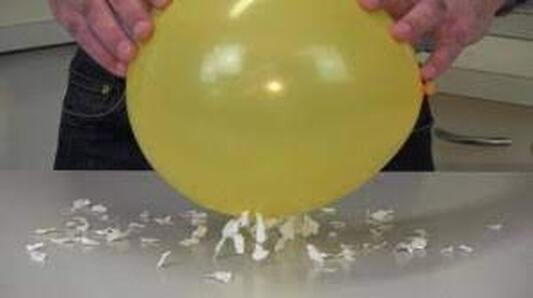
Balloon and paper
Paper & Balloon falls - charged and being attracted to the charge of the earth.
Pieces of paper not attracted balloon
Run on wool.. Pieces of paper now attracted by balloon
Charge opposite... Opposites attract. Stronger charge than earth , but same charge.
Earth and balloon same charge... should be repelled And moved up. Balloon must have same charge. Balloon should have repulsive
Paper & Balloon falls - charged and being attracted to the charge of the earth.
Pieces of paper not attracted balloon
Run on wool.. Pieces of paper now attracted by balloon
Charge opposite... Opposites attract. Stronger charge than earth , but same charge.
Earth and balloon same charge... should be repelled And moved up. Balloon must have same charge. Balloon should have repulsive


